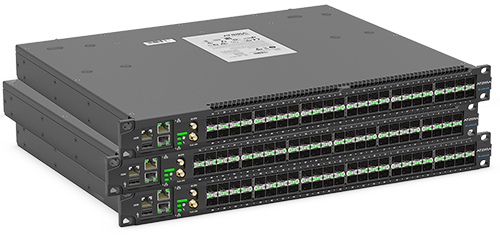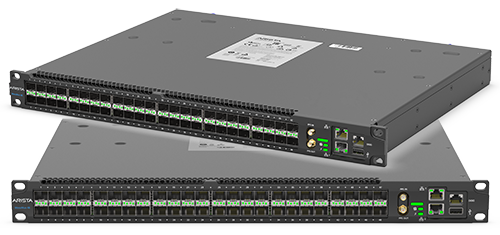The Arista 7130 hardware delivers enterprise-grade reliability and performance and implements use cases that are difficult or impossible to achieve with traditional network switches. As programmable platforms, the different 7130 devices provide a variety of features to address different use cases.
The Arista 7130 series encompasses a wide range of high-performance hardware including:
- Layer 1+ switching chips with port-to-port latencies as low as 4 nanoseconds.
- Programmable FPGA devices which support the Arista development standards -- EH and LB.
- Optional high performance switching with full featured Broadcom Jericho2
- Stable oscillators for precision timing, including OCXO and Rubidium.
- x86 CPU running EOS -- Arista's enterprise-grade network operating system.
7130 Layer 1 Connect Devices
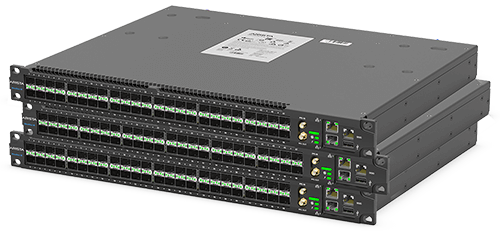 |
|
7130 Composable Devices
The Arista 7130 Series introduces a range of fully composable devices, providing a complete set of Layer 1 features and adding one or more programmable FPGA resources and optional full featured switching silicon.
Programmable FPGA resources can be used by Arista applications, 3rd party applications, or for custom development. These FPGA applications can perform functions in much the same way as custom silicon.
The 7130 FPGA devices support different board standards -- LB, EH Central or EH Leaf. These standards define the FPGA arrangement and peripherals, and determine which network applications can run on a particular device. The Arista 7130 offers two series of FPGA-enabled devices:
7130LB Series
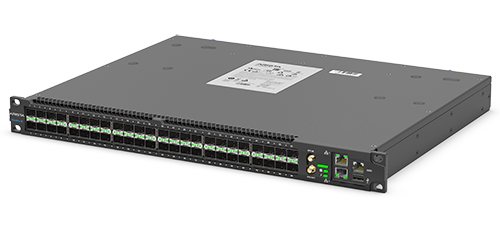 |
|
7130E Series
 |
|
7130LBR Series
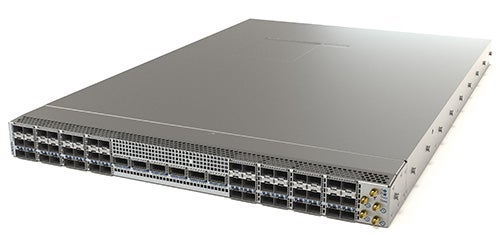 |
|
7132LB Series
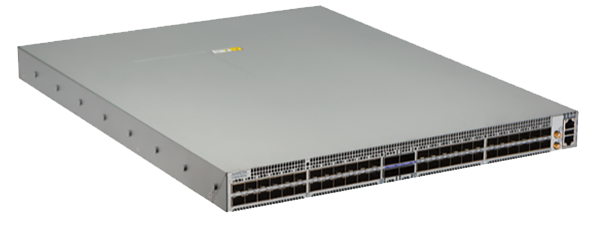 |
|
7135LB Series
 |
|
Operating Systems
Latest generation Arista 7130 Series platforms natively run Arista EOS (Extensible Operating System), common to all switching and routing platforms.
EOS - Extensible Operating System & CloudVision
EOS is a fully programmable, highly modular, Linux-based OS, using an industry standard CLI and running a single binary software image across the Arista switching family. Architected for resiliency and programmability, EOS has a unique multi-process state sharing architecture that separates state information and packet forwarding from protocol processing and application logic.
Arista CloudVision provides a network-wide approach for workload orchestration, workflow automation and real-time telemetry enabling companies to manage the network with much fewer human resources. Rapid integration with a wide range of third-party applications for virtualization, management, automation and orchestration services are equally available.
Product Overview
Product Briefs
- .7130 Connect S Series
- .7130E Series
- .7130LS Series
- .7130LBR Datasheet
- .7132LB Datasheet
- .7135LB Datasheet
- .E-Series Optical Transceivers Q & A
White Papers
- .Layman’s Guide to Layer 1 Switching
- .5 Questions to ask before buying a Layer 1 switch
- .Measuring the latency of a 4ns switch
- .Determinism is the new latency
- .Copper is Faster than fiber
- .An Overview of Arista Ethernet Capture Timestamps
- .5 Ways to Optimise exchange connectivity latency
- .5 Things to Consider When Choosing an FPGA platform
- .Measuring the Absolute Accuracy of 10GbE Packet Timestamping
- .Four key trends in the networked use of FPGAs
- .FPGA Platforms: Why the Arista 7130 is best of breed
- .Network Traffic Capture & Aggregation: Why buffer size is crucial
- .Improving MetaWatch’s timestamp accuracy with clock modules
- .STAC-TS™ BENCHMARKS - Accuracy of network timestamping and burst capacity of capture
Case Study
- .Case Study: Electronic trading firm gains ultra-low latency exchange connectivity with Arista
- .Case Study: Deutsche Börse Group monitors every trade with Arista
- .Case Study: Enyx chooses Arista to accelerate ultra-low latency solutions for major financial Service Providers

